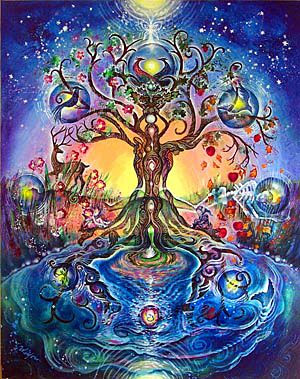When strong, difficult, negative minds and emotions get triggered in our consciousness it can be difficult for the other parts of our mind not to become scattered and disoriented. The article below explores how we can start to changes this, using the image of dogs.
Two free mindfulness resources coming up online: 30 Days of Waking Up from Sounds True, and Beyond Mindfulness from the Shambala Mountain Centre. Click to find out more!
Yours in the spirit of the journey,
Toby
A few nights ago I dreamed that a pair of large, fierce dogs were attacking a pack of much smaller but more numerous dogs. At first the small dogs were getting torn apart, but then the leader of the smaller dogs managed to get them all attacking the big dogs together. This resulted in the big dogs getting overwhelmed and having to retreat.
We’ve all got a couple of big, negative dogs in our mind that, when we get upset or hurt start to make a lot of noise and upset our whole mental and emotional equilibrium. They can boss the other different parts of our mind around because they are big, loud and fierce.
What if all of the other parts of our mind were to band together when one of our big, negative minds starts to throw its weight around? What if they were to work together as a ‘pack’ working as a unified, directed energy combining to become stronger than the big, negative dogs within us?
If this were to happen then even when we found ourselves upset or disturbed, we would be able to exert a benevolent control over that disturbance because the rest of our mind knows how to work together and stay strong. On a practical level as long as we know how to get the ‘smaller dogs’ of our mind to stay together as a pack, then our big negative mind will pretty much know that it is not going to be able to boss the situation and so will not try and act out so much. Simply the presence of the smaller dogs demonstrating that they know how to work and fight together is enough to ward off an attack from the big negative dog.
So remember, when you are feeling under attack from the big bad dogs, don’t let the rest of your mind scatter and fall apart; rather keep them consciously working together. The good thing about working with an image like this is that you can kind of experiment with it intuitively and imaginatively, and let the idea start to show you experientially how it works in practice.
A final point; in my dream the dogs were skinned, that is to say they were made of raw flesh. One way of interpreting this is that both groups of dogs represented very ‘raw’ emotions in me. Our emotions and mind can really behave instinctively and like wild dogs when we are feeling raw and vulnerable, so I have been working with this image particularly when my mind feels very raw and instinctive.
Related article: The inner sharks of the mind
The sea snakes of the mind
Related Coaching: Shadow Coaching with Toby
Related course: Wednesday 20th May 7.30-9.30pm – An Evening of Mindful Relationships: Improving Your Relationships and Social Skills Through Mindfulness – A two hour workshop
© Toby Ouvry 2015, you are welcome to use or share this article, but please cite Toby as the source and include reference to his website www.tobyouvry.com
Upcoming Courses at Integral Meditation Asia in May:
Saturday 16th May, 9.30am-12.30pm – Growing Your Mindful Freedom – The Essential Meditation of the Buddha: A Three Hour Meditation Workshop
Saturday 16th May, 2.30-5.30pm – Meditations for Activating, Healing and Awakening our Ancestral Karma
Wednesday 20th, 7.30-9.30pm – An Evening of Mindful Relationships: Improving Your Relationships and Social Skills Through Mindfulness – A two hour workshop
Friday 29th May 7.30-9.30pm – Integral Meditation Session @ the Reiki Centre – Travelling deeper into the present moment through integral meditation
Saturday 30th May, 2.30-5.30pm – Enlightened Flow: Finding the Ultimate Relaxation and Release from Stress
Integral Meditation Asia
Life-Coaching * Meditation Technology










